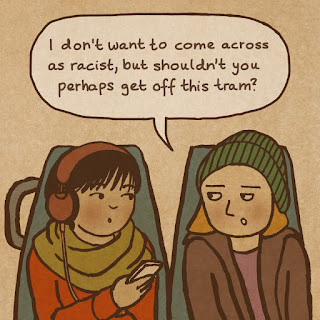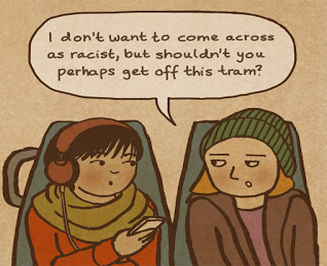
The pandemic has ushered in a whole new world of fear and uncertainty. In a very short period, we have learnt and accepted that staying ‘locked indoors’ is inconvenient but necessary to ‘break the chain’, contain the spread of the disease, and save lives. It is the ‘new normal’, a term being discussed everywhere. This makes sense. It baffles us therefore when we hear about people escaping from hospitals[i], avoiding medical scrutiny[ii], running away from quarantine centres[iii], hiding their identity, and travel history[iv]. People have even attempted suicide[v] and sometimes turning violent towards medical practitioners[vi]. Significantly these tendencies do not seem to be class, region, or religion-specific though attempts have been made to suggest so.
The very scale of such events suggests that these tendencies cannot be dismissed as just weird, strange, random events. Would a sociological perspective perhaps throw light upon them? In other words, do these seemingly bizarre actions of individuals have a social explanation and perhaps tell us something about our society?
There are two concepts in sociology one finds particularly illuminating in this context: namely, ‘stigma’ and the idea of ‘normal’. Strange, weird, dangerous – these are all terms used to create distance between groups of people, to create the ‘other’, and they are all markers of stigma.
Stigma is, therefore, a socially constructed notion of social acceptance based upon identity and association. The first sociologist to explore this concept was Émile Durkheim who, in 1895, noted how deviance and criminality are violations of social norms and thereby concepts created by society (Durkheim 1895).[vii] Erving Goffman’s work Stigma: Notes On The Management Of Spoiled Identity, marked the most influential exploration of the concept.
If we look beyond our immediate world (or transcend as Mills says), we can see that every mundane aspect of our life – be it ways of thinking, feeling, acting, or be it any social institution, all are products of society. It is the society that grants us a ‘social identity’ and decides whether the attributes possessed by an individual can be placed within the category of ‘normal’ or not. According to Erving Goffman,
While the stranger is present before us, evidence can arise of his possessing an attribute that makes him different from others in the category of persons available for him to be, and of a less desirable kind – in the extreme, a person who is quite thoroughly bad, or dangerous, or weak. He is thus reduced in our minds from a whole and usual person to a tainted discounted one. Such an attribute is a stigma, especially when its discrediting effect is very extensive; sometimes it is also called a failing, a shortcoming, a handicap (Goffman, 1963:12).[viii]
Any deviation from what is considered as ‘normal’ is associated with a ‘stigma’. As mentioned above, stigma is an attribute of an individual that is devalued. Consequently, such a person is considered inferior which reduces his or her life chances.
However, Goffman had suggested that the kind, degree, and the chance of receiving inferior treatment varies based on the concealability of the attribute that is stigmatised. When the difference in a person immediately apparent, he or she is unable to conceal the attribute that is stigmatised. It is often seen in the context of race/ethnicity/religion, gender, or any other physical attribute. One’s physical feature is something which is the immediate aspect that indicates one’s social identity. But it is often seen certain physical features are stigmatised in a certain socio-historical context. Today, as we receive the news of people with mongoloid features has been subjected to racial slurs as well as physical attacks in many places of the world, shows how dangerous it is to be stigmatized.
They are ‘discredited’. But other differences are not immediately apparent, for instance, people belonging to diverse sexual orientations, mental illness, HIV infection and most recently, the persons infected by COVID-19 can be placed in this category. Stigma faced by affected populations is not a ‘soft’ issue. Previous experiences with tuberculosis, HIV, and Severe Acute Respiratory Syndrome patients show that it impacts testing and care, disease transmission, and the population’s mental health.[ix]
Closer home in India we have seen that the stigma associated with social distancing has existed over centuries in the form of untouchability. So, when another form of ‘social distancing’[x] was called for the association with stigma was not difficult to make. People across different social class, religion, and race were petrified at the thought of getting included in the pathological category.
So, given the urgency to ‘break the chain’, the aspect of treatment, could have been highlighted more, for the people to come forward voluntarily. But rather the fact that they are ‘pathological’ and are a threat to the society was what got highlighted. The frenzy created by the television with anchors screaming out the identity of the people whose blood samples were collected; the frantic WhatsApp messages forwarding the same to make people ‘aware’ furthered the dichotomy of the normal and pathological.
We are all unfortunately fed by fear, internalized racism, communalism, and misinformation. A deep sense of ‘self’ as against an ‘other’ was already in place. And this will only heighten with the growing number of cases, rising mortality rate, and limited testing facilities. Who is going to report symptoms like fever with the looming threat of being socially ostracised? This fear psychosis has stripped us of the last shed of empathy among many ‘well informed’, ‘news following’ public.
——-
[i]https://timesofindia.indiatimes.com/city/indore/covid-19-patient-suspect-escape-from-mrtb-hospital/articleshow/74872418.cms, accessed on 11th May 2020.
[ii]https://www.timesnownews.com/india/article/odisha-1st-covid-19-case-found-with-travel-history-to-italy-patient-took-train-from-delhi-to-bhubaneshwar-to-avoid-scrutiny/565001, accessed on 11th May 2020.
[iii]https://timesofindia.indiatimes.com/city/pune/covid-19-in-pune-patient-runs-away-from-quarantine-facility-brought-back-in-two-hours/articleshow/74681014.cms, accessed on 11th May 2020.
[iv]https://ahmedabadmirror.indiatimes.com/entertainment/bollywood/covid-19-kanika-kapoor-allegedly-hid-travel-history-to-london-before-attending-party-in-lucknow-mother-also-tests-positive/articleshow/74732729.cms, accessed on 11th May 2020.
[v]https://www.hindustantimes.com/india-news/coronavirus-update-suspected-covid-19-patient-attempts-suicide-in-delhi/story-EB2ipMwT8QZlPHWU5M3OpO.html, accessed on 11th May 2020.
[vi]https://www.ndtv.com/india-news/attacks-on-doctors-healthcare-workers-rise-amid-covid-19-pandemic-2204547, accessed on 11th May 2020.
[vii] Durkheim, Emile. (2015). The Rules of Sociological Method. New Delhi: Vani Prakashan.
[viii] Goffman, Erving. (1963). Stigma: Notes on the Management of Spoiled Identity. USA: Penguin Books.
[ix]https://scroll.in/article/959153/covid-19-stigma-is-a-major-roadbloack-in-indias-path-to-recovery-heres-how-to-beat-it, accessed on 11th May 2020.
[x] The term physical distancing is being now used more often. The WHO too took a position. https://www.who.int/docs/default-source/coronaviruse/transcripts/who-audio-emergencies-coronavirus-press-conference-full-20mar2020.pdf?sfvrsn=1eafbff_0 , accessed on 11th May 2020.
***
Gargi Gayan is an Assistant Professor in the Department of Sociology at the Krishna Kanta Handiqui State Open University (KKHSOU), Assam.
